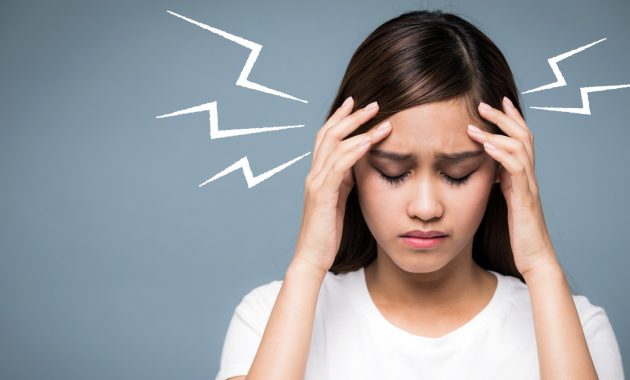Women are more likely to experience stroke than men! This World Stroke Day, know the symptoms of this condition and how you can prevent it.
The burden of stroke worldwide is on the rise, making it the fourth leading cause of death and the fifth leading cause of disability. A stroke occurs when blood flow to the brain is interrupted, and it is notably more common in women than men. In the United States, one in five women aged 55 to 75 will experience a stroke, according to the Centers for Disease Control and Prevention. Due to this increased risk, women must monitor their health and be vigilant about recognising the signs and symptoms of stroke.
What is a stroke?
A stroke, sometimes called a brain attack, occurs when blood flow to a part of the brain is interrupted or reduced, preventing brain tissue from getting oxygen and nutrients. This can happen due to a blocked artery (ischemic stroke) or a burst blood vessel (hemorrhagic stroke). During a stroke, brain cells begin to die within minutes, leading to symptoms like sudden weakness, confusion, trouble speaking, or loss of coordination. This may affect your ability to speak or move and the experience can be frightening. In women, the risk of stroke is higher due to hormonal changes, high blood pressure (hypertension), and other risk factors such as birth control pills, age, etc., as per the Centers for Disease Control and Prevention (CDC).
According to the World Health Organization (WHO), the lifetime risk of experiencing a stroke has risen by 50 percent over the past 17 years, with current estimates suggesting that 1 in 4 people will have a stroke in their lifetime. Between 1990 and 2019, the incidence of stroke increased by 70 percent. This highlights the importance of recognising stroke symptoms, especially in women.
What are the symptoms of stroke in women?
Symptoms of stroke in women can present differently than in men and should not be overlooked. Common signs include:
- Numbness or weakness can be mostly felt on the face, arm, or leg, especially on one side of the body, which will indicate a stroke in women.
- Disorientation, confusion, and trouble speaking or understanding are also signs of a stroke.
- Women may experience difficulty walking, dizziness, loss of balance or coordination.
- A sudden, severe headache that does not go away can signal a hemorrhagic stroke.
- Women may also experience seizures, loss of consciousness, persistent hiccups, or neck pain, particularly if the stroke affects the brainstem area.

Women may report symptoms that are not associated with strokes in males, which include nausea, vomiting, or lightheadedness. These uncommon signs of a stroke in women can also accompany more typical signs like disorientation, shortness of breath, slurred speech, and fatigue, as per the American Association of Neuroscience Nurses.
Types of stroke
A stroke is primarily caused by a disruption in blood flow to the brain, which can occur in two main types: ischemic and hemorrhagic.
- Ischemic strokes are one of the most common types of stroke. It accounts for about 87 percent of cases as per the American Stroke Association and is caused by a blockage in a blood vessel due to a blood clot or plaque buildup.
- Hemorrhagic strokes occur when a blood vessel in the brain bursts, leading to bleeding in or around the brain. This can be a result of high blood pressure, aneurysms, or arteriovenous malformations.
Additionally, transient ischemic attacks (TIAs), or mini-strokes, are brief episodes of stroke-like symptoms caused by temporary disruptions in blood flow. While they do not cause permanent damage, TIAs indicate a higher risk for future strokes.
You may also like


What should you do if you suspect a stroke?
The American Stroke Association suggests a simple method to recognise stroke symptoms. If you think you or someone nearby may be experiencing a stroke, remember to act FAST:
- Face: Ask the person to smile. Is one side of their face drooping?
- Arms: Ask them to raise both arms. Is one arm drifting downward?
- Speech: Have them repeat a simple phrase. Is their speech slurred or unusual?
- Time: If you notice any of these signs, it is crucial to call emergency services immediately.
Every minute matters when it comes to a stroke. Any delay in medical intervention may increase the risk of lasting brain damage or disability.
Also read: World Stroke Day: 9 things to know about stroke recovery
How to prevent the risk of stroke in women?
Most strokes can be prevented by managing medical conditions and adopting a healthy lifestyle.
1. Understand the ABCs of heart and brain health:
- Aspirin: Aspirin may lower your stroke risk by preventing blood clots. Consult your doctor before starting aspirin to ensure it is appropriate for you, suggests the Centers for Disease Control and Prevention (CDC).
- Blood pressure: Keep your blood pressure in check through healthy lifestyle changes and by following your doctor’s instructions on medication.
- Cholesterol: Manage your cholesterol levels with healthy habits and adhere to any prescribed medications.
- Smoking: Avoid smoking altogether. If you currently smoke, seek resources to help you quit.

2. Follow a healthy lifestyle
- Eat well: Prioritise nutritious foods, opting for low-sodium options to help control blood pressure. Incorporate high-fibre foods and whole grains to manage cholesterol.
- Stay active: Regular physical activity is key to maintaining a healthy weight and promoting heart and vascular health.
3. Consult your healthcare provider
Discuss your stroke risk with your doctor, considering factors like age and family history. Also, work on controlling other health conditions, such as diabetes and heart disease.
#World #Stroke #Day #Common #symptoms #stroke #women
